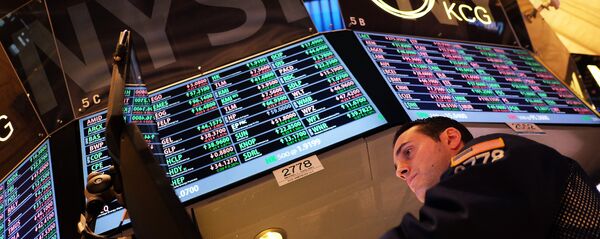Kristian Rouz – The US Department of Commerce has just released GDP figures, and while they generally support the Federal Reserve’s opinion of the economy, they still fall behind the anticipated 2.6% growth for the second quarter.
According to the fresh data, this year the US economy grew coherently, though slower, than it would be acceptable for any significant change in monetary policy. Only a moderate rate hike would be appropriate for September, however, as it might come without a warning and its impact to market stability would be greater as the uncertainty of the Fed still lingers.
The US Labor Department released another report, also early on Thursday, showing less-than-expected unemployment claims filed in the third week of July.
Back to the Commerce Dept data, US consumer spending – the driving force behind America’s economy – rose an annualized 2.9%, above the previously estimated 2.7% growth. New purchases contributed 2% to that figure.
Investment outside of the real estate market fell 0.6% however, at its weakest since late 2012. Government investment was also sluggish, having added just 0.8% in Q2 after a decrease of 0.1% in the previous quarter.
Business spending on infrastructure dropped 1.6% in Q2 after a 7.4% slump in Q1, while equipment spending also slid 4.1%. A dramatic decline in mining, a 68.2% collapse, is attributed to idling oil derricks due to low oil prices. The figure was 44.5% negative in Q1. However, US drillers recommissioned 21 oil derricks in the third week of July, a third increase this year.
Stockpiles of material goods were flat, even though the US has piled up more crude than expected. US businesses are holding some $110 bln worth of goods at the end of Q2, which is less than $112.8 bln last quarter.
US inflation added 2.2%, at its fastest since mid-2012 and also almost in line with the Fed inflation target. At the start of the year inflation dropped 1.9%. However, count out foods and energy, Q2 consumer inflation stands at 1.8%, just below the Fed’s target.
The GDP data is more of a supportive factor for a September hike, however, across-the board weakness across most sectors is an alarming signal to policymakers.
The US economy is excessively reliant on effective consumer demand these days, while other sectors are faltering, thus undermining America’s macroeconomic stability. In such circumstances, a stronger dollar is an encouraging factor for consumers, but that is at the expense of other important industries.
Economic growth is now at its weakest since WWII, and more so given the ultra-accommodative monetary policy. As the Fed moves towards normality, even this very moderate expansion might evaporate.


![The Australian parliament has issued a harsh verdict on the Trans Pacific Partnership trade deal currently being negotiated, calling it an attack [on] internet freedoms and seriously lacking in oversight, in a report released Monday. The Australian parliament has issued a harsh verdict on the Trans Pacific Partnership trade deal currently being negotiated, calling it an attack [on] internet freedoms and seriously lacking in oversight, in a report released Monday. - Sputnik International](https://cdn1.img.sputnikglobe.com/img/102401/39/1024013919_0:444:3893:2156_600x0_80_0_0_791f94a8b3137bd8d4a3da76d991c0eb.jpg)


